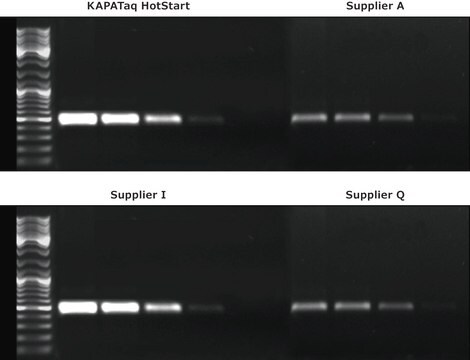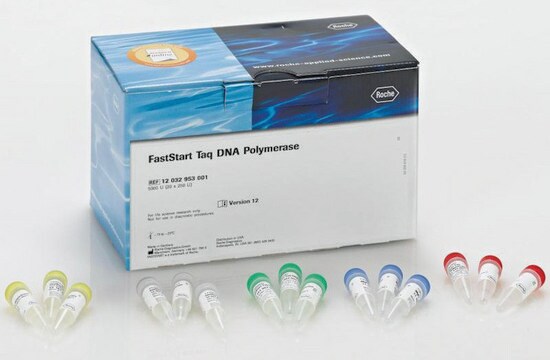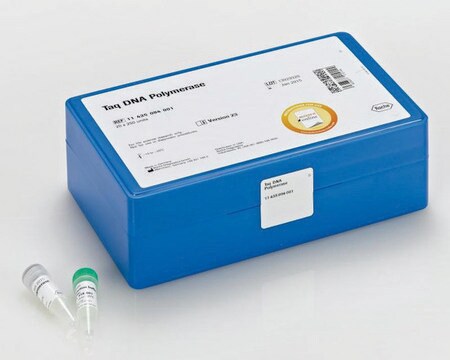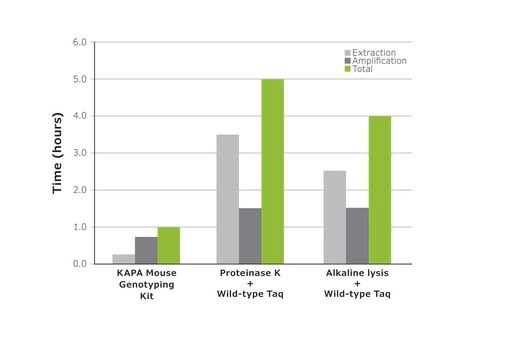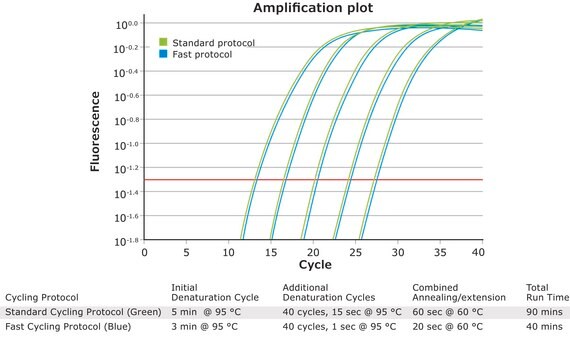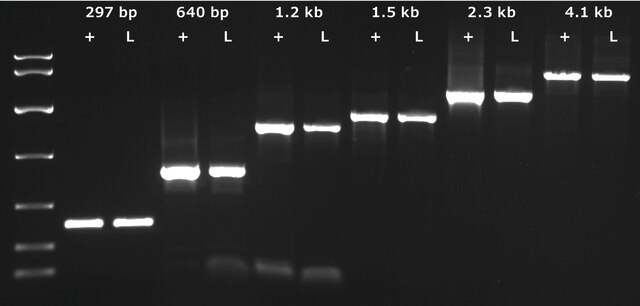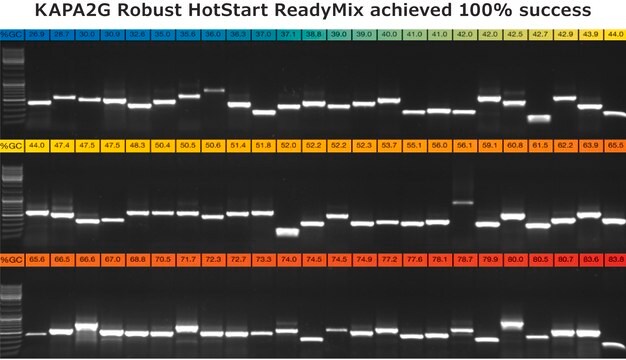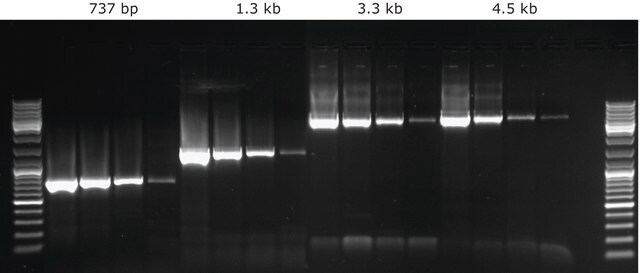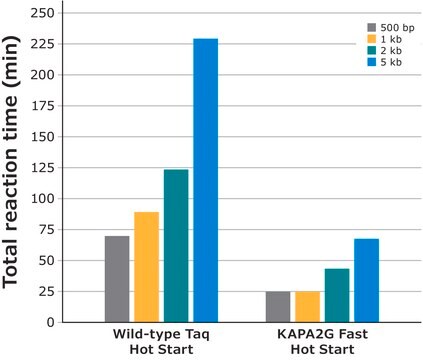TAQKB
Roche
KAPA Taq PCR Kit
Synonyme(s) :
PCR, Taq
About This Item
Produits recommandés
Durée de conservation
≤18 mo.
Niveau de qualité
Caractéristiques
dNTPs included: no
hotstart: no
Conditionnement
pkg of 250 U (KK1014)
pkg of 2500 U (BK1000)
pkg of 500 U (KK1015)
pkg of 5000 U (BK1002)
Fabricant/nom de marque
Roche
Technique(s)
PCR: suitable
Entrée
purified DNA
Température de stockage
−20°C
Vous recherchez des produits similaires ? Visite Guide de comparaison des produits
Application
- High throughput PCR
- Amplification of low copy DNA templates
- Multiplex PCR
- Specific amplification of complex templates
- RT-PCR
- random amplified polymorphic DNA polymerase chain reaction (RAPD-PCR)
- Polymerase chain reaction (PCR)
- Genotyping
Actions biochimiques/physiologiques
Caractéristiques et avantages
- Improved sensitivity, specificity, and yields
- Novel buffer formulation facilitates specific primer annealing, leading to higher yield of specific product
Quick Notes:
- KAPA Taq DNA Polymerase can replace any commercial Taq DNA polymerase in an existing protocol.
- The final MgCl2 concentration may need to be optimized to account for differences in buffer formulation.
- KAPA Taq Buffers contain MgCl2 at a final concentration of 1.5 mM. Buffer A is recommended as first approach and for applications requiring high yields. Buffer B is recommended for applications where high sensitivity is required (e.g. when the template is limiting). Both buffers may be evaluated to determine the buffer most suitable for a specific application.
- The KAPA Taq PCR system is suitable for the amplification of fragments up to 3.5 kb from genomic DNA or 5 kb from less complex targets.
Qualité
Notes préparatoires
Autres remarques
Informations légales
Composants de kit seuls
- KAPA Taq Standard or HotStart® DNA Polymerase 5 U/μL
- 10X KAPA Taq Buffer A
- 10X KAPA Taq Buffer B
- MgCl2 25 mM
Code de la classe de stockage
12 - Non Combustible Liquids
Classe de danger pour l'eau (WGK)
WGK 1
Point d'éclair (°F)
does not flash
Point d'éclair (°C)
does not flash
Certificats d'analyse (COA)
Recherchez un Certificats d'analyse (COA) en saisissant le numéro de lot du produit. Les numéros de lot figurent sur l'étiquette du produit après les mots "Lot" ou "Batch".
Déjà en possession de ce produit ?
Retrouvez la documentation relative aux produits que vous avez récemment achetés dans la Bibliothèque de documents.
Les clients ont également consulté
Articles
An overview of directed evolution and the methods for generating proteins with optimized or entirely new functions.
Notre équipe de scientifiques dispose d'une expérience dans tous les secteurs de la recherche, notamment en sciences de la vie, science des matériaux, synthèse chimique, chromatographie, analyse et dans de nombreux autres domaines..
Contacter notre Service technique
